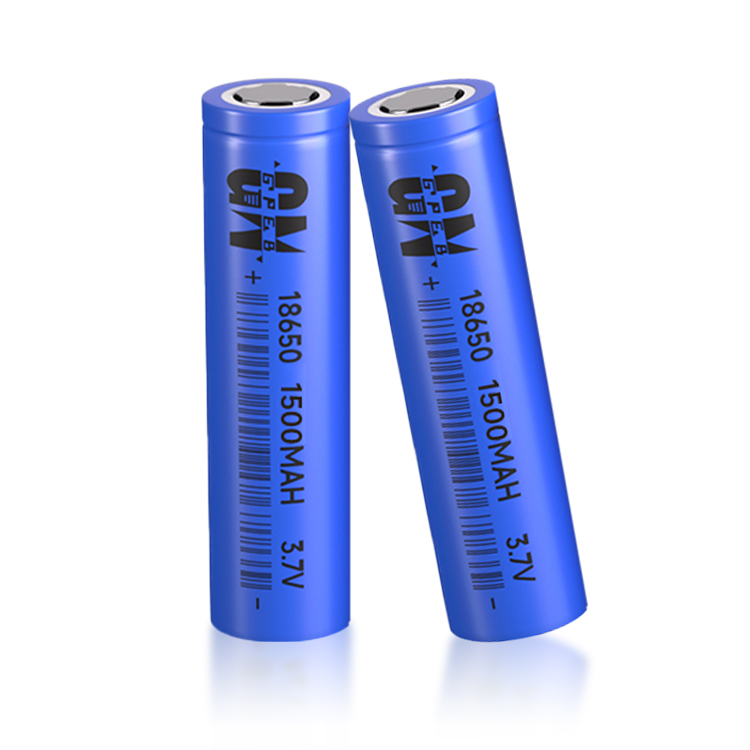

Important progress has been made in the research and engineering of single-crystal high-nickel ternary cathode materials for lithium-ion batteries. Lithium nickel cobalt manganate (NMC) and lithium nickel cobalt aluminate (NCA) ternary cathode materials can provide higher energy density and power. Density, has been widely used in new energy vehicle power batteries. Recently, new progress has been made in the engineering research of single crystal high-nickel ternary materials. Source of this article: WeChat public account Shanghai Jiao Tong University Chemistry and Chemical Engineering
Lithium nickel cobalt manganate (NMC) and lithium nickel cobalt aluminate (NCA) ternary cathode materials can provide higher energy density and power density and have been widely used in new energy vehicle power lithium batteries. Recently, new progress has been made in the engineering research of single crystal high-nickel ternary materials.
Source of this article: WeChat public account Shanghai Jiao Tong University School of Chemistry and Chemical Engineering ID: i-scce
Recently, Special Researcher Li Linsen and Professor Ma Zifeng of Shanghai Jiao Tong University collaborated with Professor Tang Ming of Rice University in the United States to publish a paper titled "Energy Storage Materials", a well-known journal in the field of energy materials. The latest research results of "Single-Crystal Nickel-Rich Layered-Oxide Battery Cathode Materials: Synthesis, Electrochemistry, and Intra-Granular Fracture". The first author of the paper is Qian Guannan, a doctoral candidate at the School of Chemistry and Chemical Engineering of Shanghai Jiao Tong University. Li Linsen, Tang Ming and Ma Zifeng are the co-corresponding authors of the paper.
Lithium nickel cobalt manganate (NMC) and lithium nickel cobalt aluminate (NCA) ternary cathode materials can provide higher energy density and power density and have been widely used in new energy vehicle power lithium batteries. At present, most commercialized ternary cathode materials are secondary spherical polycrystalline materials of about 10 microns formed by the agglomeration of nanoscale primary particles. There are a large number of grain boundaries inside polycrystalline NMC. During the battery charging and discharging process, polycrystalline NMC is prone to grain boundary cracking due to anisotropic lattice changes, causing secondary particles to break, and the specific surface area and interface side reactions to increase rapidly (Figure 1), causing the battery impedance to rise. , performance degrades rapidly.
Figure 1. Schematic representation of particle fragmentation in polycrystalline and single crystalline NMC cathode materials and its correlation with electrochemical performance.
There are no grain boundaries inside single-crystal ternary materials, which can effectively deal with the problem of grain boundary fragmentation and performance degradation caused by it. This research team developed a new single-crystal material synthesis process to prepare single-crystal NMC ternary cathode materials. In this work, in-situ XRD and ex-situ SEM were used to observe the preparation process, and reaction parameters such as calcination temperature, lithiation ratio, and water washing process were optimized to prepare type 622 and type 811 single crystal NMC with excellent performance. Compared with commercial polycrystalline ternary materials, single crystal ternary materials have better cycle stability at both normal and high temperatures. (Figure 2) The team further studied the internal crack growth and single crystal problems of single crystal NCM. Through fracture mechanics analysis, the parameter conditions for the growth of internal cracks in single crystals and the critical size value for internal cracking of single crystals were estimated; through electrochemical experiments and ion beam cutting, the battery charging voltage, electrochemical phase change, and material delithiation amount were elucidated. The relationship with the internal cracks of single crystal and the problem of crack growth orientation. Research shows that within the normal charge and discharge voltage range (2.8-4.3 V vs Li+/Li), after 1000 charge and discharge cycles, single crystal ternary material particles will not break; however, under overcharge conditions (for example, Charged to 4.7 V, each structural unit takes out >0.84 Li+), single crystal NMC particles will also undergo intra-particle fragmentation. This work provides theoretical basis and model materials for the further development of single-crystal high-nickel ternary materials.

Popular recommendation
What should I pay attention to when using lithium battery in RV
2022-11-04AA NiMH battery.Alkaline fuel cell technology analysis
2023-10-0918650 lithium-ion battery.Two major reasons affect the service life of 18650 lithium battery.
2023-10-136LR61 alkaline battery.How does temperature change affect the charging and discharging of lithium ba
2023-10-10LR6 battery!Causes and solutions to common problems in PCB alkaline etching
2023-10-08AG Coin battery Common type
2022-06-18802540 lipo battery.Cylindrical lithium battery 21700 from a technical perspective
2023-10-09LR626 battery.Briefly describe the production process of 18650 lithium-ion battery pack
2023-10-12LR43 battery.What are the key points of the manufacturing process of 18650 lithium-ion battery?
2023-10-12LR03 battery!Can BYD's hybrid technology rival Toyota's?
2023-10-08cr2032 button battery.Detailed introduction to the classification, advantages and breakthroughs of n
2023-10-08AG8 battery.18650 lithium ion battery winding process precautions
2023-10-09